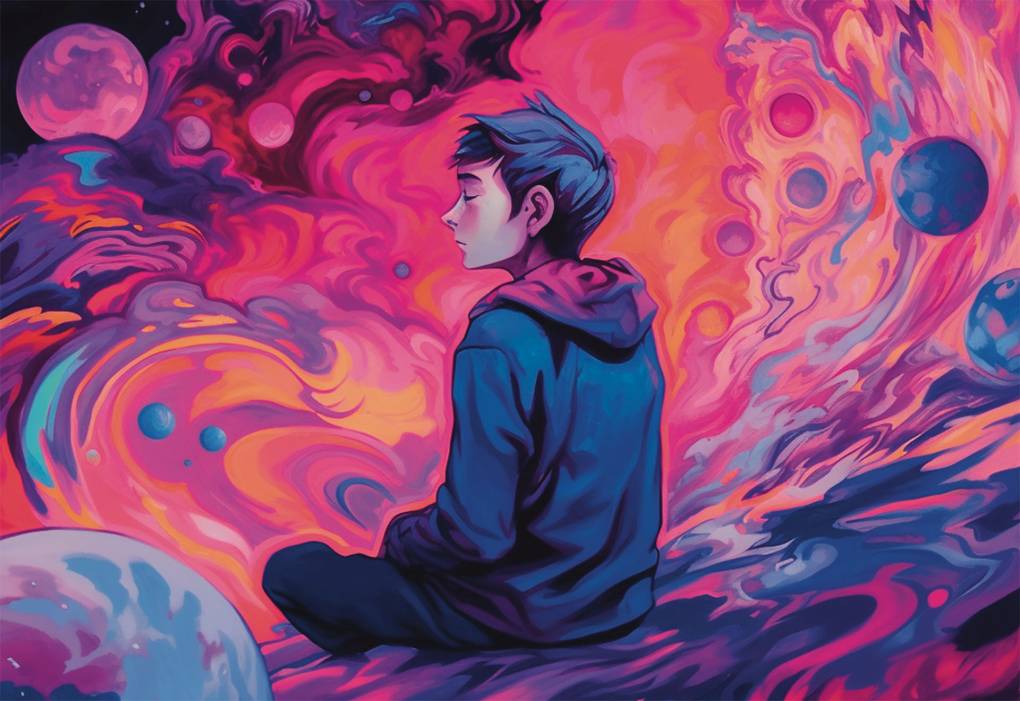Table of Contents
Artificial Intelligence (AI) has increasingly permeated various facets of modern life, including the realm of art. AI art, which involves the use of algorithms and machine learning techniques to create or enhance artistic works, represents a burgeoning field that blends technology with creativity. This article explores the evolution of AI art, tracing its origins, development, and future potential.

1. Early Beginnings: The Intersection of Art and Algorithms
The journey of AI art began with the integration of early computational techniques into artistic processes. The initial experiments in this area set the foundation for future developments.
- Algorithmic Art: In the 1950s and 1960s, artists and mathematicians began exploring the use of algorithms to create art. Notable early works include the generative art created by Frieder Nake, Harold Cohen, and other pioneers who utilized computer algorithms to produce abstract patterns and shapes. These early experiments demonstrated that computers could generate complex visual forms based on mathematical principles.
- Algorithmic Aesthetics: During this period, the concept of algorithmic aesthetics emerged, emphasizing the role of algorithms in shaping visual outputs. Artists like Vera Molnár and Manfred Mohr used algorithms to create systematic and geometric art, paving the way for the integration of computer science and artistic expression.
2. Advancements in Machine Learning and Neural Networks
The development of machine learning and neural networks marked a significant advancement in AI art. These technologies enabled more sophisticated and creative applications.
- Neural Networks: Neural networks, particularly deep learning models, revolutionized AI art by allowing machines to learn patterns and styles from large datasets. Convolutional Neural Networks (CNNs) and Generative Adversarial Networks (GANs) emerged as powerful tools for generating and manipulating images. These networks could analyze and replicate artistic styles, enabling AI to create artworks that mimic or innovate upon traditional artistic techniques.
- Artistic Style Transfer: One of the landmark applications of neural networks in art is style transfer. This technique involves applying the style of one artwork to the content of another. The algorithm extracts the style from an image, such as the brushstrokes of a famous painter, and applies it to a different image, creating a new piece that combines both content and style.
3. AI Art and Creativity: The Role of Human Input
The role of AI in the creative process has sparked debates about the nature of creativity and the role of human input in AI-generated art.
- Collaboration Between Artists and AI: Many contemporary artists view AI as a tool that complements rather than replaces human creativity. Artists use AI to generate ideas, explore new styles, and push the boundaries of traditional art forms. The collaboration between human artists and AI systems results in unique artworks that blend human vision with algorithmic innovation.
- AI as a Creative Partner: AI systems can generate novel patterns and compositions, but they typically require human guidance and interpretation. The interaction between the artist and the AI system involves selecting inputs, curating outputs, and making artistic decisions. This collaborative process highlights the role of human creativity in shaping and contextualizing AI-generated art.

4. AI Art in the Contemporary Art Scene
AI art has gained recognition and prominence in the contemporary art scene, with exhibitions, auctions, and critical discussions highlighting its impact.
- Art Exhibitions: AI-generated artworks have been featured in major art institutions and exhibitions, including the Tate Modern in London and the Museum of Modern Art (MoMA) in New York. These exhibitions showcase the versatility and innovation of AI art, demonstrating its integration into mainstream art practices.
- Auction Success: AI-generated art has achieved notable success at auction houses. In 2018, an AI-generated portrait titled &8220;Edmond de Belamy,&8221; created by the Paris-based art collective Obvious using GANs, sold at Christie&8217;s for over $432,000. This sale marked a significant milestone in the recognition and commercialization of AI art.
5. Ethical and Philosophical Considerations
The rise of AI art brings forth several ethical and philosophical questions regarding authorship, originality, and the role of machines in creative endeavors.
- Authorship and Originality: One of the central debates in AI art is the question of authorship. If an AI system generates an artwork, who is the author—the machine, the programmer, or the artist who used the AI? This question challenges traditional notions of originality and artistic ownership.
- Machine Creativity: The concept of machine creativity raises philosophical questions about the nature of creativity itself. Can machines truly be creative, or are they merely following programmed rules and patterns? The exploration of machine creativity prompts a reexamination of what constitutes artistic expression and innovation.
6. The Future of AI Art
The future of AI art holds exciting possibilities as technology continues to evolve and new applications emerge.
- Enhanced AI Techniques: Advances in AI techniques, including more sophisticated neural networks and improved algorithms, will likely lead to even more innovative and compelling art forms. The development of AI systems with greater capacity for understanding context, emotion, and aesthetics could further enhance the creative potential of AI art.
- Integration with Virtual and Augmented Reality: AI art is expected to intersect with virtual and augmented reality technologies, creating immersive and interactive art experiences. The combination of AI-generated content with virtual environments could offer new ways for audiences to engage with and experience art.

7. Conclusion
The evolution of AI art represents a dynamic intersection of technology and creativity, showcasing the transformative potential of artificial intelligence in the art world. From early algorithmic experiments to contemporary neural networks and collaborations between artists and machines, AI art reflects the ongoing exploration of new artistic frontiers. As technology continues to advance, AI art will likely continue to challenge traditional notions of creativity and push the boundaries of artistic expression. The fusion of human imagination and machine learning promises to shape the future of art in ways that are both innovative and thought-provoking, offering new perspectives on the nature of creativity and the role of technology in the creative process.
